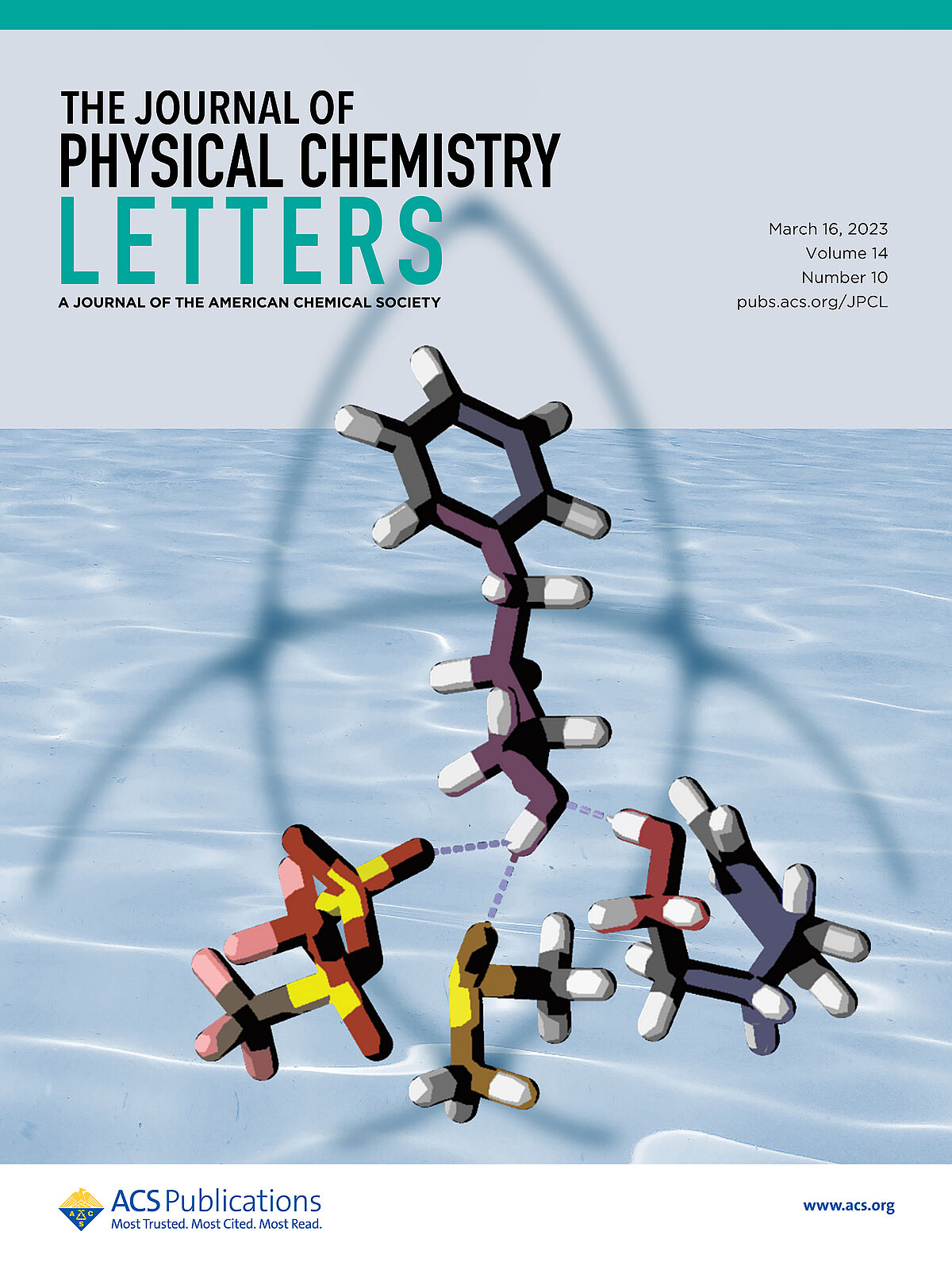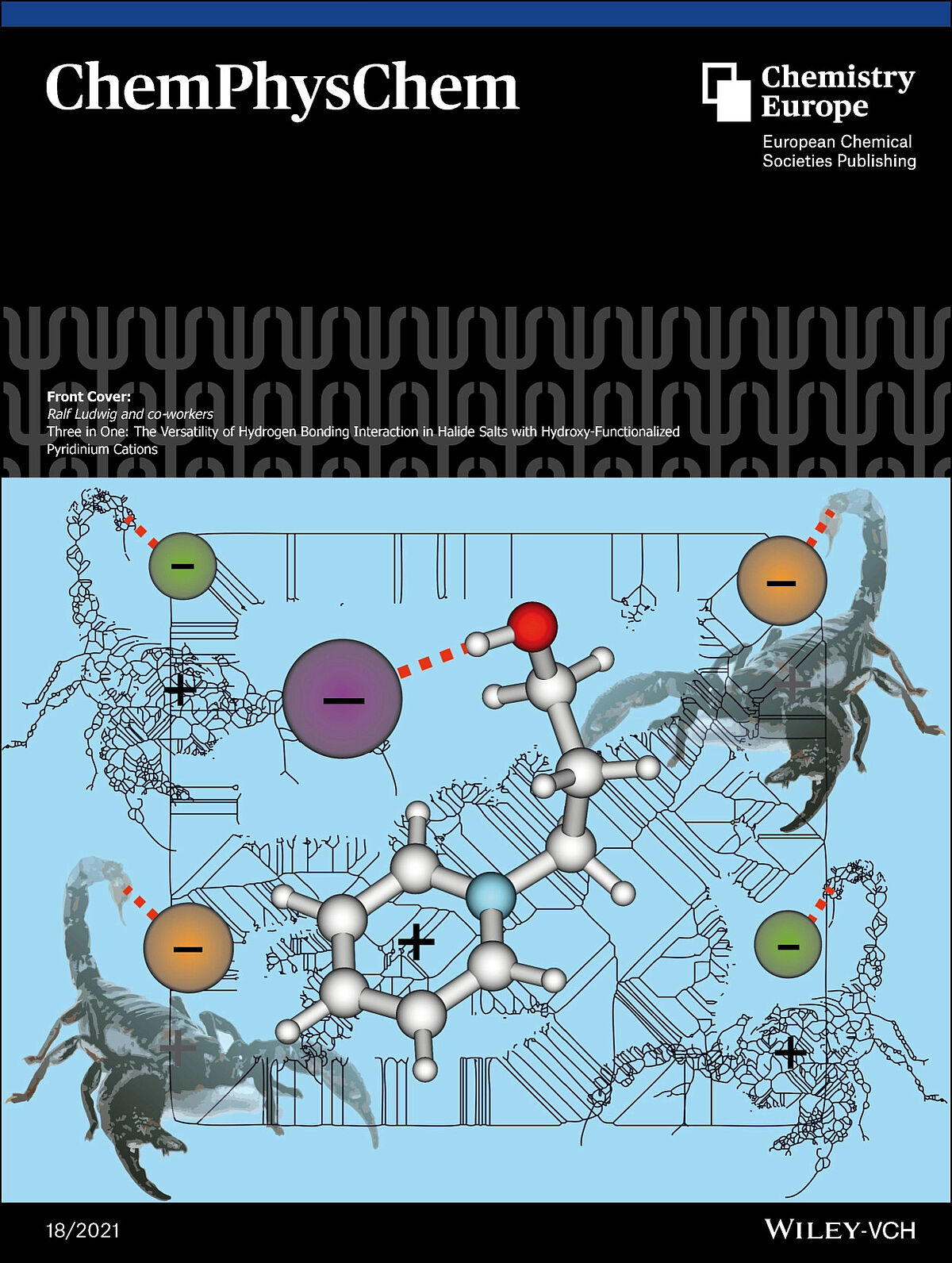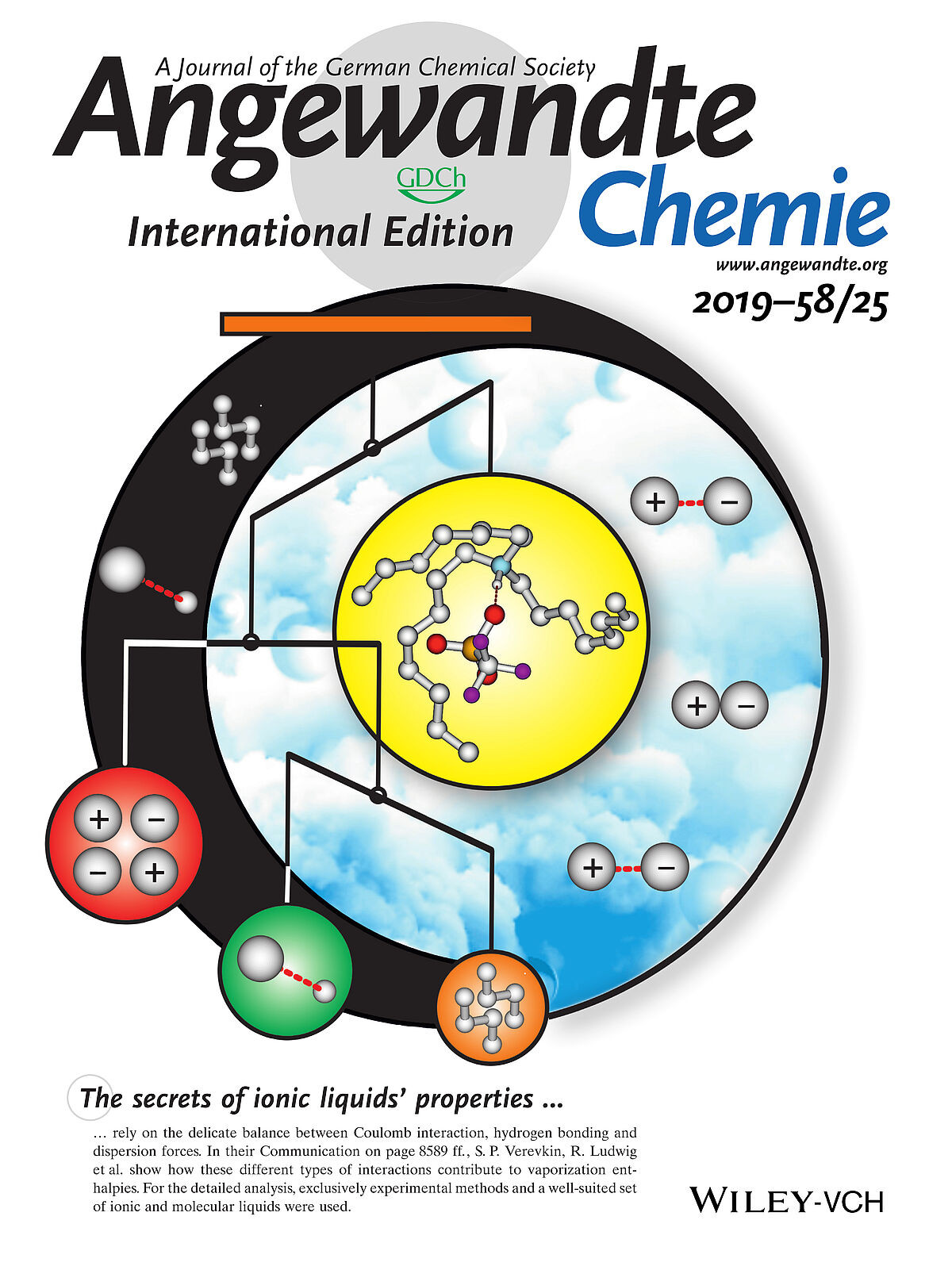Over the last years the main field of research has been and still is ionic liquids. With the aid of a very broad set of appliances physico-chemical questions are being tackled. Quantum chemical calculations of the structure of ionic liquids allow the theoretical calculation of the respective IR spectrum. In addition the spectra are being recorded for real to obtain a complete set of very well comparable results. ILs are well known for their abilityto dissolve salts such as CO2 (J. Phys. Chem. B, 113: 12727, 2009) or solids like cellulose (ChemPhysChem, 12: 2404, 2011).
The interactions between of cations and anions within the IL are of very fundamental interest (Angew. Chem., 120:3890, 2008). The behaviour of hydrogen bonding within the IL is also of greatest interest for the researcher, as they strongly influence physical properties such as the viscoyity (Phys. Chem. Chem. Phys., 13:14064, 2011 and Angew. Chem., 123:6791, 2011).
Furthermore, more common characteristics like the structure (ChemPhysChem, 8:2464, 2007), diffusion coefficients (Phys. Chem. Chem. Phys., 13:3268, 2011) and enthalpies of vaporization (ChemPhysChem., 11:1623, 2010) are being measured and, supported by MD-Simulation, calculated. It is one goal to theoretically predict ideal combinations of anions and cations to obtain and synthesize ionic liquids with a set of desired properties.



